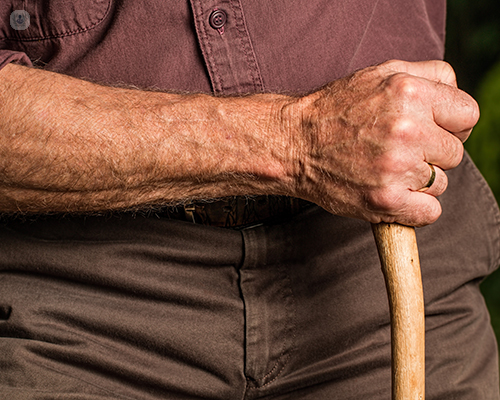A quick guide to wrist surgery
Written in association with:There are many different reasons someone may have to undergo wrist surgery, including injuries or wrist ganglions. In his latest online article, highly-experienced consultant orthopaedic hand surgeon Mr Andrew Logan offers his expert insight into the different procedures available, answering his patients most frequently asked questions.

What are the common reasons for needing wrist surgery?
Pain is by far the commonest reason for needing wrist surgery. This pain could be caused a soft tissue injury that has not settled, osteoarthritis or wrist ganglions, for example.
What are the different types of wrist surgery and how do they differ?
Wrist surgery for osteoarthritis can range from minimally invasive procedures, such as wrist denervation (cutting nerves around the wrist that sense pain), to more complex operations like total wrist fusion (stiffening the arthritic joints). Other treatments include partial wrist fusions, removing arthritic bones (trapeziectomy), or shortening bones to reduce pressure on arthritic areas. Joint replacements are also an option.
For wrist injuries, surgery can be performed either urgently or later if symptoms persist. When symptoms do not improve after an injury, surgery might involve debriding or reconstructing torn ligaments, or using wrist arthroscopy to shave away areas of inflammation.
For non-injury-related wrist symptoms, such as a wrist ganglion, surgical removal is an option.
What is the recovery process like after wrist surgery?
The more significant the wrist surgery, the longer the recovery process. Recovery can range from a couple of weeks after a wrist denervation to five or six months after ligament reconstruction.
What are the potential risks and complications of wrist surgery?
Risks and complications are rare. With any surgery there is a risk of infection and a risk of stiffness, either in the wrist or the whole wrist and hand. Wrist fusions have a small risk of not joining up. There is also a risk of injury to the sensory nerves around the wrist.
How can physical therapy aid in recovery after wrist surgery?
All my patients who undergo wrist surgery are seen in the first week following the operation. Supervised range-of-movement exercises and splinting (if needed) help prevent stiffness, control swelling, reduce pain, and ultimately improve the final result.
What lifestyle changes may be necessary after undergoing wrist surgery?
The aim of wrist surgery is to relieve symptoms and restore function. If the operation is successful then I would not expect any changes in lifestyle. If a joint has become stiff, then there will be a period of adaptation to get used to the decreased movement in the joint.
Mr Andrew Logan is a highly-experienced consultant orthopaedic hand surgeon based in Cardiff. If you would like to book a consultation with Mr Logan, you can do so today via his Top Doctors profile.


